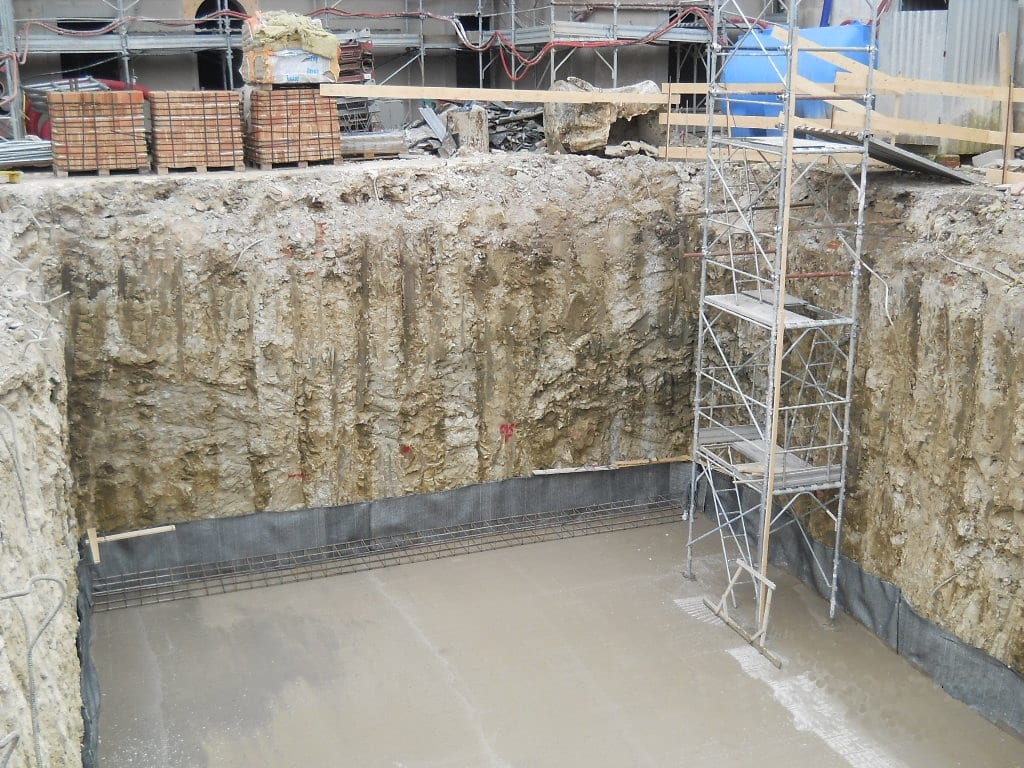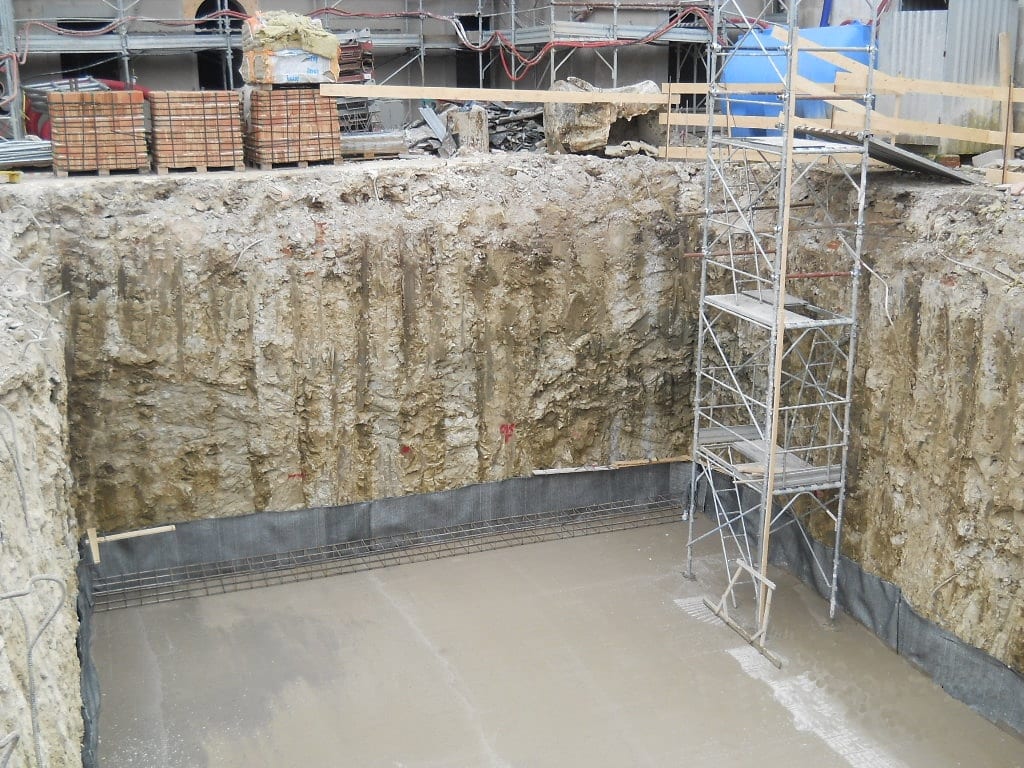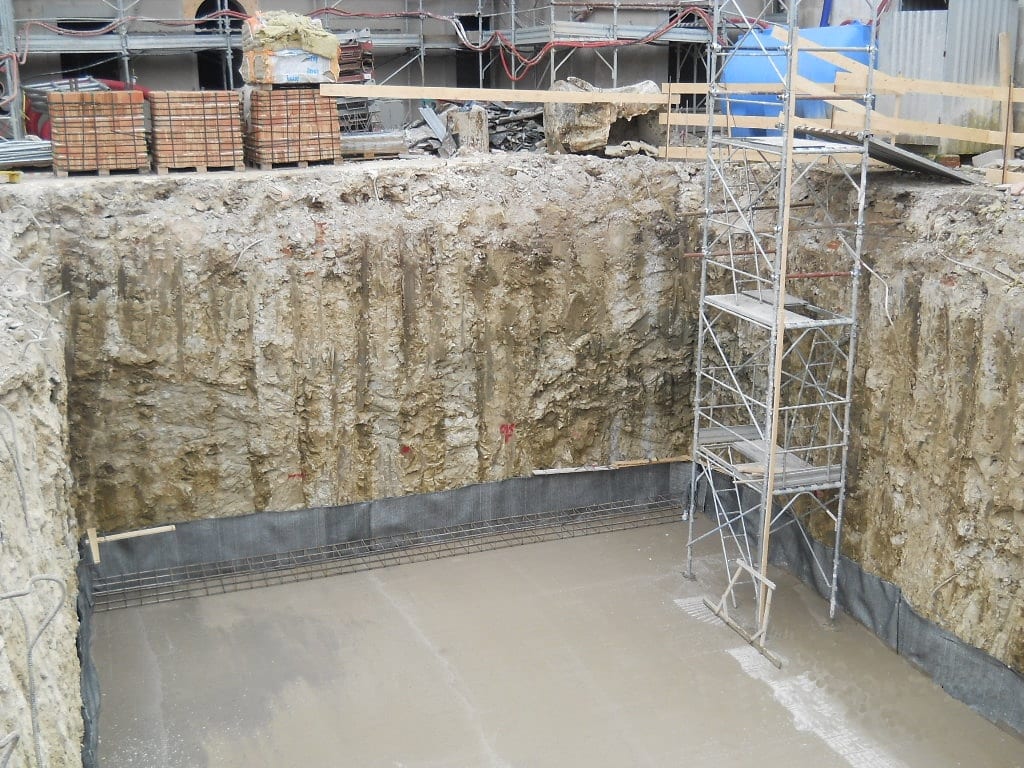Soil stabilization is a crucial aspect of construction and civil engineering projects. An effective method for soil stabilization is grouting. Grouting involves injecting a liquid-like material into the soil to fill voids, improve strength, control water flow, and increase the soil's overall stability. There are different types of grouting techniques, each suited to specific soil conditions and project requirements. In this article, we will explore different types of floor grouting, their processes, applications, and benefits.
Soil grouting is the process of injecting a liquid material into the soil to improve soil properties. It is commonly used in geotechnical engineering to improve soil stability and bearing capacity, control water flow, and mitigate potential risks such as soil liquefaction. Different grouting methods are used depending on the specific soil conditions and desired results.
Let's discuss each grouting method in detail.
Cementitious grouting
Definition and purpose
The cement injection process involves injecting a mixture of cement, water and additives into the soil. The cement mortar penetrates the soil, solidifies and forms a stable mass. The main objective of the cement grouting process is to fill voids and cracks, increase soil resistance and reduce permeability.
Procedures and equipment
The cement injection process begins with drilling holes in the ground at pre-determined locations. A mortar mix is then made by mixing cement, water and sometimes additives to improve fluidity or speed up the curing process. The mortar mixture is pumped into the holes using special equipment such as mortar pumps, funnel tubes or injection shutters. The mortar fills the voids and hardens over time, effectively stabilizing the floor.
Applications and Benefits
Cementitious grouting is used in a variety of scenarios, including:
- Foundation stabilization: Can be used to stabilize foundations affected by settlement or ground subsidence.
- Dam and Tunnel Construction: Cement grout helps control water flow, prevent leaks, and improve the stability of dams and tunnels.
- Soil Improvement: The bearing capacity of weak or loose soils is improved, making them suitable for development.
- Groundwater control: Cementitious grout can create impermeable barriers that control the flow of water into the soil, preventing erosion and infiltration.
The benefits of cement mortar include increased soil strength, greater stability, reduced permeability and improved overall soil performance. This is done in a more conventional way compared to other types of injections and other systems.
Chemical pressing
Definition and purpose
During chemical grouting, also known as resin grouting or injection grouting, chemical grout compounds are injected into the soil. These mortars are generally made from polyurethane, acrylic or epoxy resins. The purpose of chemical grouting is to create a barrier that fills voids, stabilizes the soil and controls water flow.
Procedures and equipment
The chemical injection process begins with drilling holes in the ground, similar to cement grouting . Chemical mortar is made by mixing resin components and catalysts to achieve desired properties such as viscosity and curing time. The mortar is then injected into the holes using special pumps and injection devices.
Chemical mortar reacts and expands when it comes into contact with water, filling voids and cracks in the floor. When hardening, it forms a solid mass that improves soil stability and reduces permeability.
Applications and Benefits
Chemical grouting has a wide range of applications, including:
- Soil Stabilization: Can be used to stabilize loose or weak soils to prevent subsidence or erosion.
- Underground mining: Chemical grouting is suitable for stabilizing soil around tunnels, underground utilities and excavation sites.
- Dam and Dike Repair: Helps seal cracks and control water flow in dams and dikes, improving their structural integrity.
- Groundwater Control: Chemical grouting is useful for creating barriers to control water flow and prevent infiltration and contamination.
The benefits of chemical injection include increased soil strength, greater stability, reduced permeability and the ability to target specific areas with precision.
Bentonite Injection
Definition and purpose
During bentonite grouting, a bentonite-based grout is injected into the soil. Bentonite is a type of clay that swells when it comes into contact with water and forms a gelatinous substance. The purpose of bentonite grout is to seal and stabilize the soil, control water flow, and prevent groundwater contamination.
Procedures and equipment
When pressing bentonite, holes are made in the ground, similar to other pressing processes. A bentonite paste is made by mixing bentonite powder with water. The mud is then pumped into the holes using special grouting equipment.
When bentonite paste comes into contact with water in the soil, it swells and forms a gel-like barrier that fills voids and cracks, effectively stabilizing the soil and regulating water flow.
Applications and Benefits
Bentonite grouting is commonly used in the following applications:
- Sealing underground structures: It is effective for sealing underground storage tanks, tunnels and basements to prevent water infiltration.
- Soil sealing: Bentonite grout can create impermeable barriers to control water flow, preventing soil erosion and improving stability.
- Environmental remediation: Serves to contain and prevent the spread of contaminated groundwater.
The advantages of bentonite grout include excellent sealing properties, low permeability, compatibility with various soil types and cost-effectiveness.
Compaction injections
Definition and purpose
Compaction grouting, also called pressure grouting, is a technique used to improve soil density and increase bearing capacity. A mortar with low sinkability and low mobility is injected into the soil under high pressure.
Procedures and equipment
The compaction grouting process begins with drilling well-spaced injection holes into the ground. A rigid injection mixture is prepared, generally consisting of cement, sand and water. The mortar is then injected into the ground under high pressure using special injection pumps.
When injected, the mortar displaces the surrounding soil, compacting it and increasing its density. This leads to better soil stability and load-bearing capacity.
Applications and Benefits
The compaction injection process is suitable for a variety of applications, including:
- Foundation Support: Can be used to stabilize foundations affected by settlement or weak ground conditions.
- Sink Renovation: Compaction injections can effectively fill and stabilize sinks, thus preventing further settlement.
- Soil compaction: Improves the bearing capacity of loose or soft soils and makes them buildable.
- Stabilizing Retaining Walls: Compaction grouting can improve soil stability behind retaining walls and reduce the risk of failure.
The benefits of the grout compaction process include increased soil density, improved bearing capacity, improved structural support and reduced settlement.
Blasting process
Definition and purpose
Jet grouting is a versatile technique that involves injecting grout under high pressure to create a soil-cement column in the ground. The purpose of jet grouting is to improve soil strength, increase stability and control water flow.
Procedures and equipment
Jet grouting involves injecting a high-speed jet of mortar into the ground at specific locations. Mortar is usually a mixture of cement, water and sometimes additives. The high-pressure jet breaks the soil and mixes it with the mortar, forming a soil-cement column.
Jet grouting can be performed using a variety of methods, including single, dual and triple fluid systems. The choice of method depends on the specific soil conditions and project requirements.
Applications and Benefits
The jet blasting process has a wide range of applications, including:
- Soil Stabilization: Can stabilize loose or weak soils, improving their bearing capacity for foundations and structures.
- Excavation support: Jet blasting can be used to create earth-cement walls that provide temporary or permanent support during excavation work.
- Groundwater Control: Helps control water flow by creating impermeable barriers, preventing infiltration and erosion.
- Soil consolidation: Sandblasting can consolidate loose or liquefied soil, reducing the risk of soil settling or liquefaction .
The advantages of jet grouting include increased soil strength, increased stability, controlled water flow, and the ability to create custom soil-cement columns.


Permeation pressing
Definition and purpose
Permeation grouting, also called permeation grouting, is a technique used to fill voids and improve the stability of granular soils. This involves injecting low-viscosity mortar into the soil, which penetrates and solidifies the soil.
Procedures and equipment
During permeation injection, holes are drilled into the ground at regular intervals. A low viscosity mortar is prepared, generally consisting of cement, water and additives. The mortar is then injected into the ground using special equipment under low pressure.
The mortar penetrates the floor cavities, fills them and forms a solid mass. The solidified mortar improves the cohesion and stability of the granular soil.
Applications and Benefits
Permeation grouting is commonly used in the following applications:
- Subsoil improvement: The stability and bearing capacity of loose or granular soils can be improved and thus made suitable for development.
- Waterproofing: Penetration grouting is an effective method for sealing underground structures and preventing water from entering or escaping.
- Tunnels: The ground around tunnels can be stabilized, reducing the risk of subsidence or ground collapse.
The benefits of permeation grouting include improving soil stability, reducing permeability, improving bearing capacity and preventing soil erosion.
Crack grouting
Definition and purpose
Crack grouting is a technique for filling and sealing cracks, joints and fissures in the ground. The purpose of crack grouting is to improve the stability of rock formations and prevent water or other substances from flowing through these cracks.
Procedures and equipment
Fracture injection involves drilling holes into rock formations that contain cracks or fissures. A mortar mixture is prepared, generally consisting of cement, water and additives. The mortar is then injected under pressure into the holes using special equipment.
When injected, the mortar penetrates the cracks and joints and fills them completely. The mortar solidifies and forms a strong, impermeable barrier that improves the stability of the rock formation.
Applications and Benefits
Crack grouting has several applications, including:
- Rock stabilization: Effectively stabilizes broken rock masses and thus reduces the risk of rockfalls or rock collapses.
- Dam rehabilitation: Crack injection can seal and stabilize cracks in dam foundations, improving their structural integrity.
- Underground Mining: Helps reinforce and consolidate broken rock formations in underground mines, improving safety and stability.
- Tunnels: Crack plastering is used to fill and seal cracks that occur during tunnel construction to prevent water infiltration and ground instability.
The benefits of crack grouting include increased rock stability, reduced permeability, improved bearing capacity, and greater structural integrity.
By utilizing crack injection techniques, engineers and geotechnical engineers can effectively mitigate the risks associated with fractured rock formations and ensure the long-term stability and safety of various construction projects.
Soil grouting is a valuable technique for stabilizing soil in various construction and civil engineering projects. Commonly used methods include cement grouting, chemical grouting, bentonite grouting, compaction grouting, jet grouting and permeation grouting. Each method has its own advantages and applications depending on specific soil conditions and project requirements.
Cement injections are effective in filling voids, increasing soil strength and reducing permeability. Chemical grout uses resin-based grouting compounds to create barriers, stabilize soil, and control water flow. Bentonite injections, on the other hand, use bentonite clay to seal and stabilize the soil, preventing water penetration. Compaction grouting helps improve soil density and bearing capacity by injecting low-slump grout. The jet grouting process uses high-pressure injections to form soil-cement columns that provide stability and control water flow. Permeation grouting uses low-viscosity grout to fill voids in granular soils and improve stability.
By understanding the different types of grouting techniques, engineers and construction professionals can choose the method that best suits their project. Effective use of these methods can improve soil stability and reduce potential risks, ensuring the success and longevity of construction projects.
FAQ: Different Types of Grouting
1. How long does it take for mortar to harden in cement grout?
The setting time of cement mortar may vary depending on factors such as the type of cement used, environmental conditions and composition of the mixture. It generally takes a few hours to a few days for the mortar to fully cure and reach the desired strength.
2. Is chemical grouting environmentally friendly?
Chemical grouting can be environmentally friendly depending on the grouting materials used. Many modern chemical mortars are non-toxic, harmless and environmentally friendly. It is important to choose grouts that meet environmental standards and guidelines.
3. Can jet blasting be used on all types of floors?
Jet grouting can be used on a variety of soil types, including cohesive soils, granular soils, and even mixed soils. However, the effectiveness and efficiency of jet grouting can vary depending on specific soil conditions. Site-specific assessments and technical expertise are essential in determining the suitability of jet grouting for a specific project.
4. Will compaction injections cause damage to existing structures?
If grouting is carried out by experienced professionals, it should not cause significant damage to existing structures. However, it is important to evaluate potential impacts and consider factors such as proximity to structures, ground movements and vibrations during the grouting process.
5. How long does the solidification process take in permeation pressing?
The curing time of permeation grouting depends on the composition of the mortar, soil conditions and other factors. It can vary from a few minutes to several hours. Monitoring and testing is performed to determine when the mortar is sufficiently cured.

